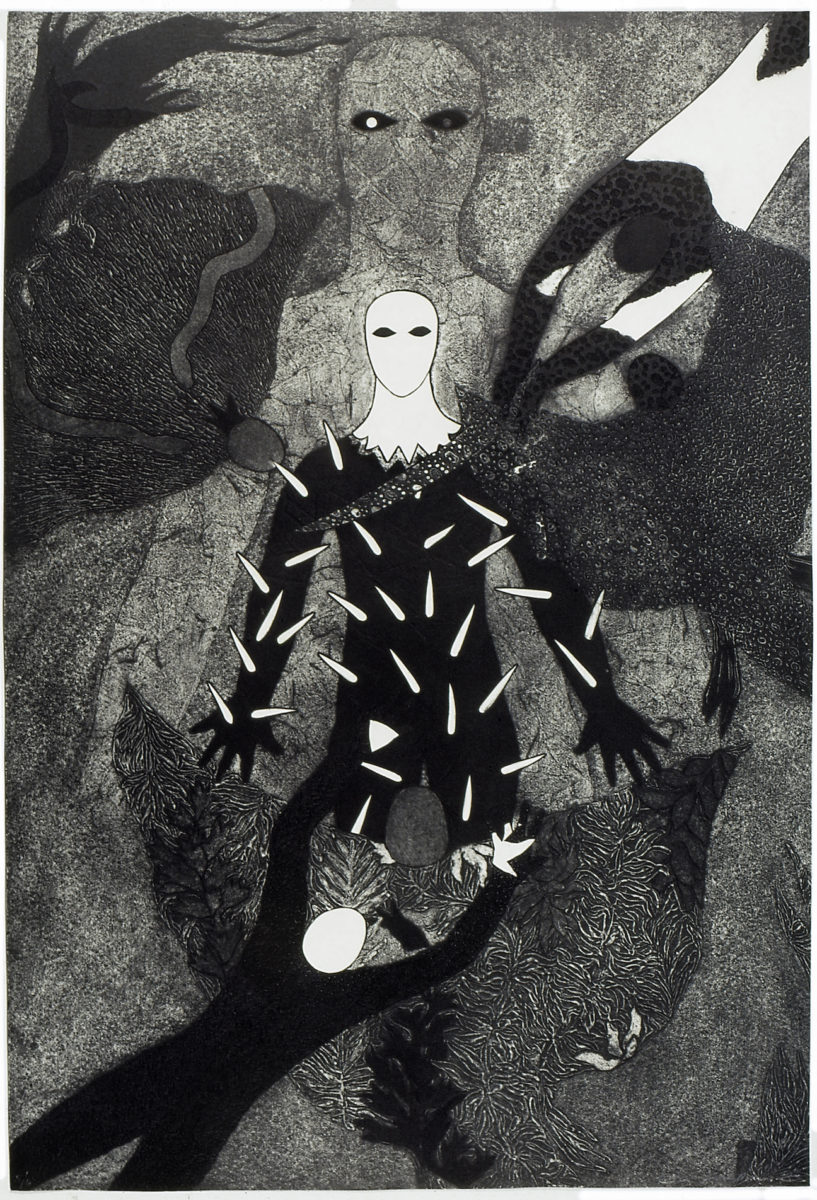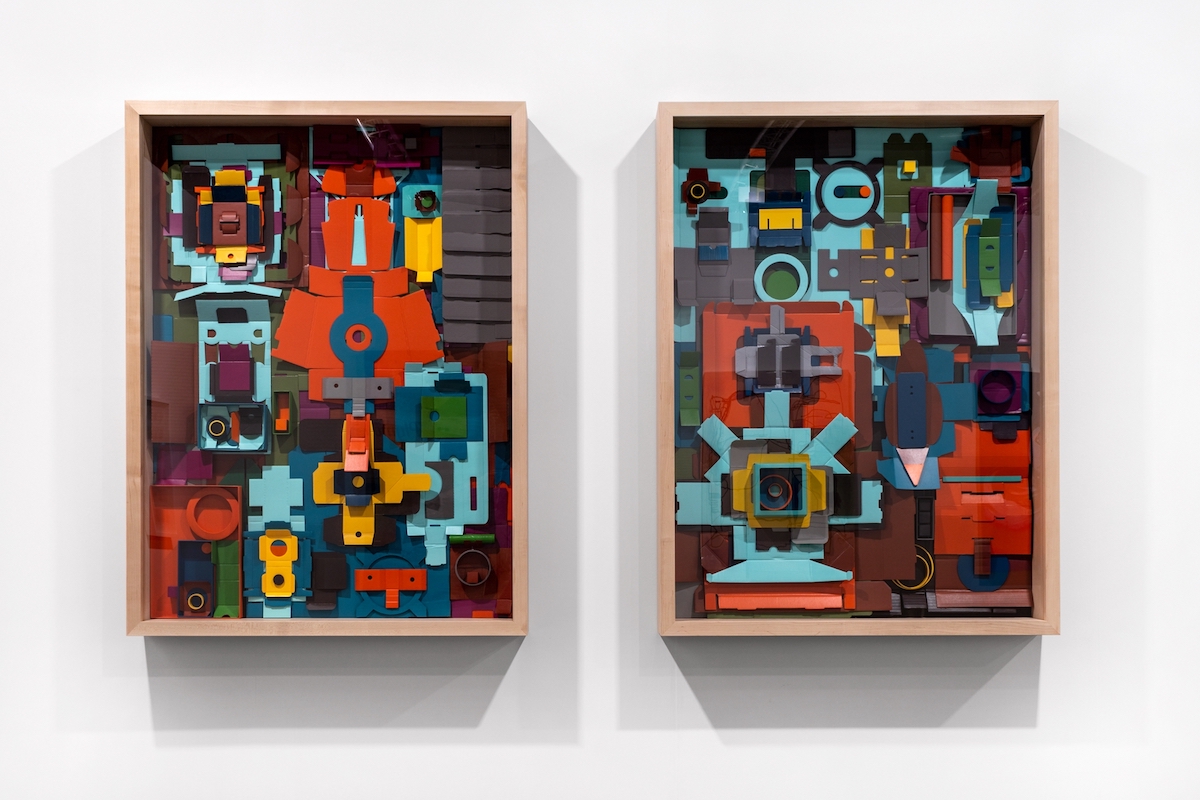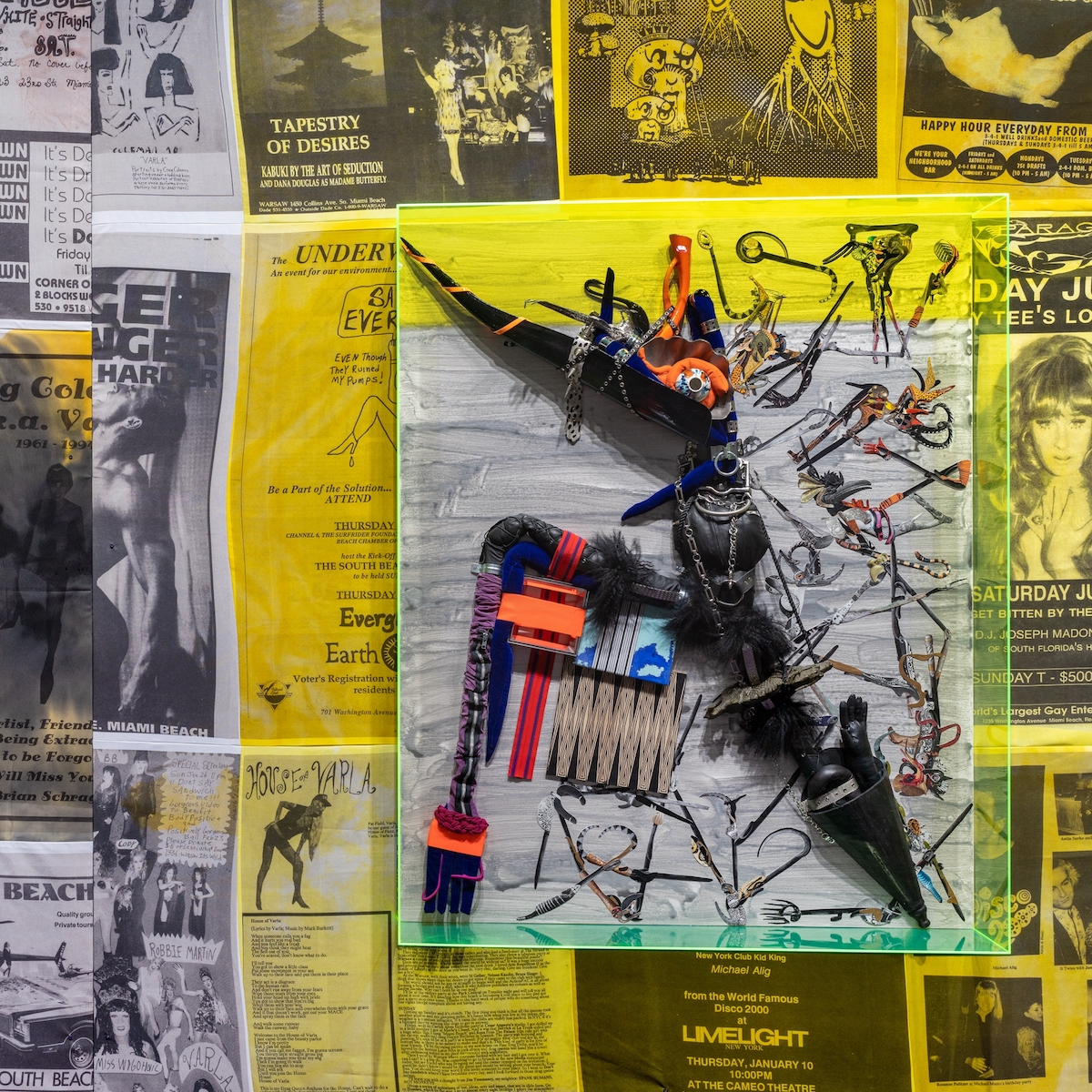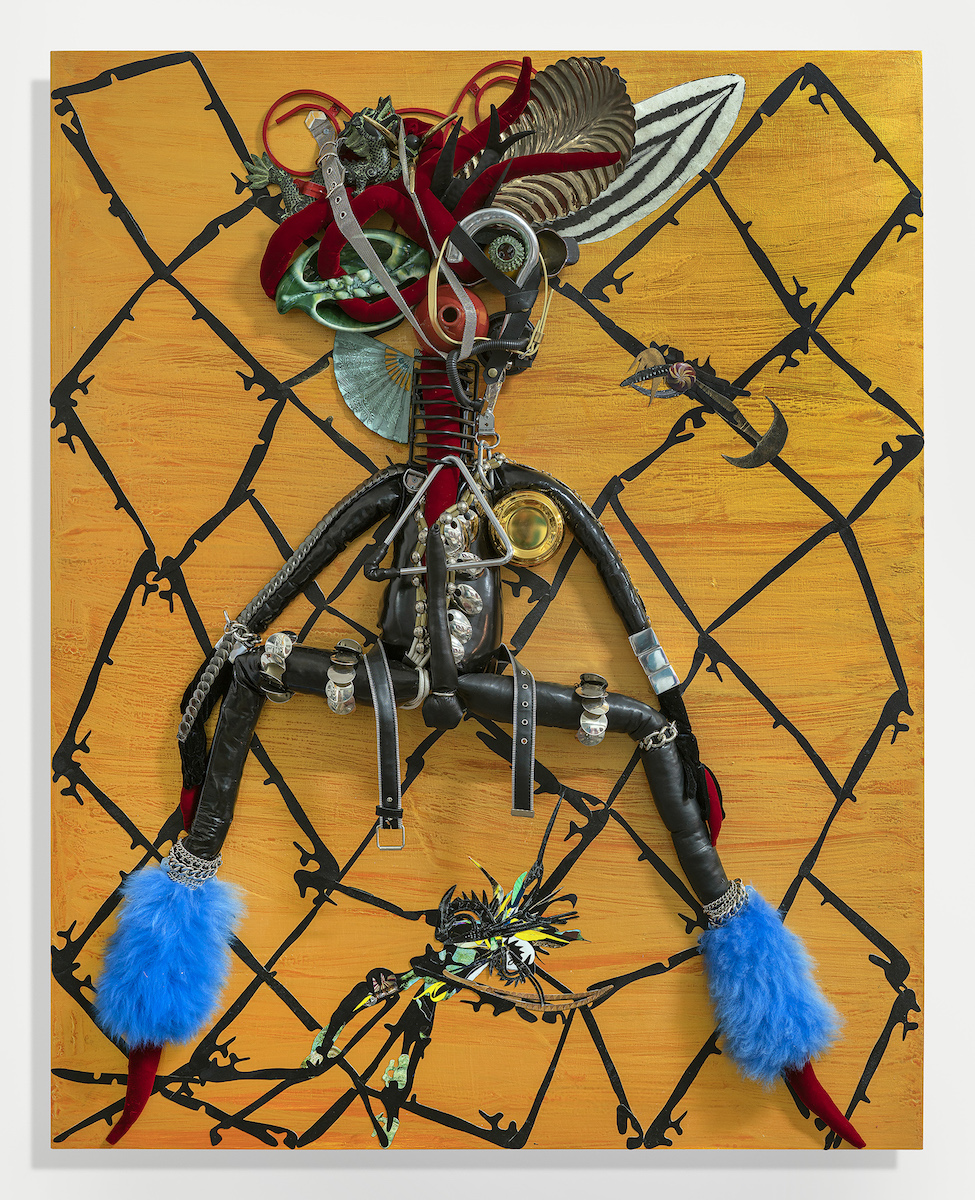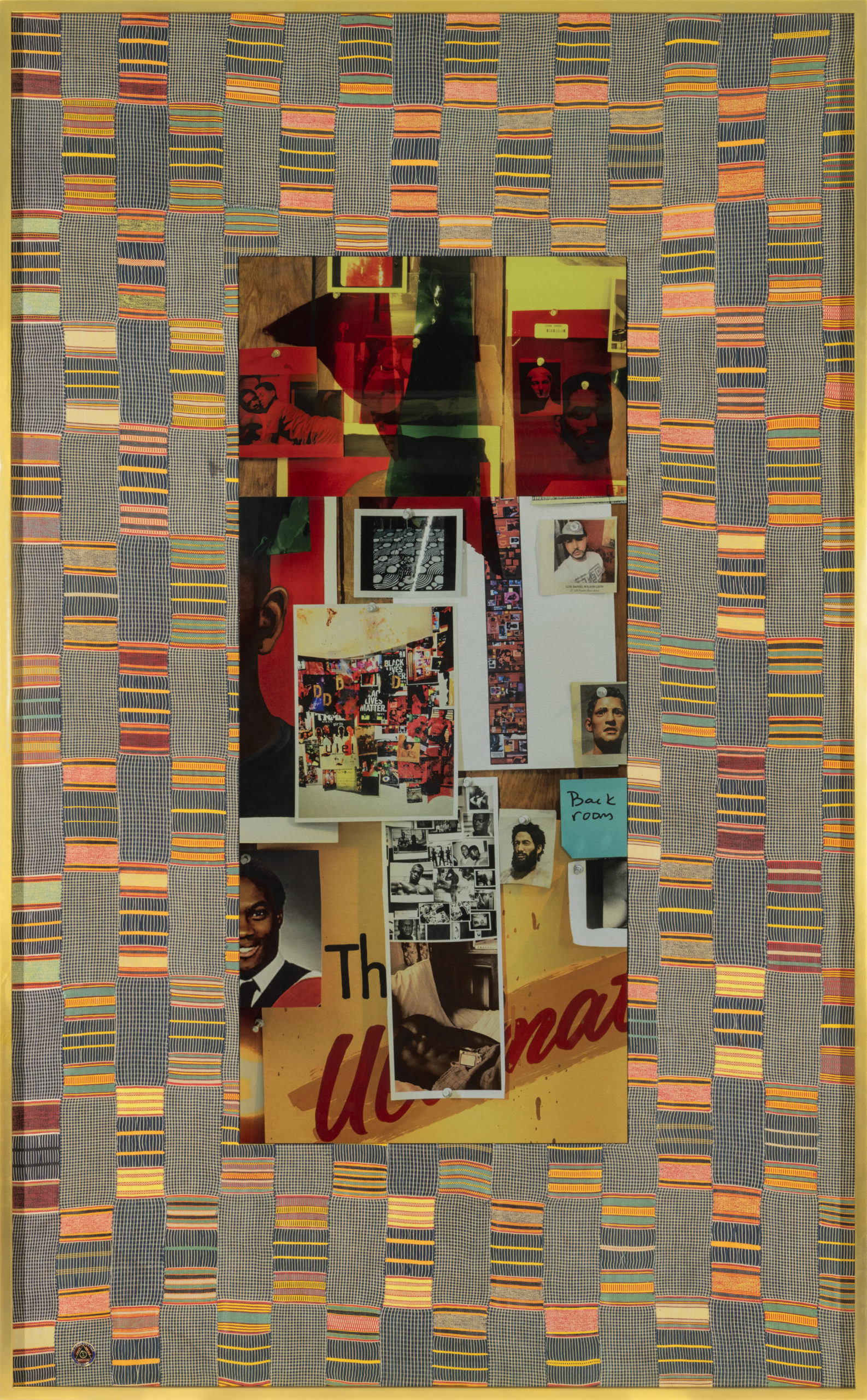Art Basel Miami Beach
Galleries December 4 – 8, 2019
Meridians December 3 – 8, 2019
David Castillo Gallery presents a selection of new works for Art Basel Miami Beach 2019 (Galleries Sector Booth F28)—across painting, paper, photography and sculpture—by artists Sanford Biggers, Maria de los Angeles Rodríguez Jiménez, Lyle Ashton Harris, Kalup Linzy, Belkis Ayón Manso, Pepe Mar, Xaviera Simmons, Shinique Smith, Vaughn Spann, and Wendy White.
The exhibited works enter into discursive dialogues that diverge and converge around the history of the body. The body’s diverse symbolisms and forms have manifested throughout history against modes of representation unique to their time: from the Venus of Willendorf to powerful contemporary examples, the body carries with it programs of meaning that are inextricable from the power orders of history. There are fundamental antagonisms threaded throughout and between the exhibited works, among them abstraction and figuration, wholeness and fragmentation, abundance and absence, objectification and celebration, and trauma and care; these contradictory positions locate the body as a site for complex investigations about the nature of living. The body is encyclopedic. bell hooks approaches the body as a “site of contestation” between the identifying markers that might constrain it. Questions of representation emerge in these conversations where gender, sexuality, race, and religion are expressed in human terms, through the characteristics of the body, its adornments, and the ways in which it negotiates the political, economic, and cultural conditions of its age. To inhabit a body is to shoulder the weight of those that came before. These connections and tangents unfold within the gallery’s Art Basel booth.
Sanford Biggers debuts a new body of ceramic wall works that take as their influence the lush geometries of his quilt constructions. These ceramic works are the latest iteration of the artist’s ongoing research and use of antique quilts. Through his works, Biggers tells uneasy histories that do not pinpoint individual narratives but present the collective experiences of people subjected to America’s fiercely racialized past.
Lyle Ashton Harris culls images from vast sources including his archive of 35 mm Ektachrome photographs which he took between the years of 1986 and 1996. The works serve as a disembodied portrait of Harris as a young man through the faces of his friends and lovers, and the backdrop of a broader LGBTQ community during the second wave of AIDS activism. His superbly executed unique assemblage works are set against green Ghanaian fabrics with gold bars.
Kalup Linzy puts on and takes off identity in a drag practice where his own body steps within a diverse collection of inexhaustible, fictional personalities—from artists to wealthy benefactors—who play a role in the curious dynamics of the art world. His new series of Polaroid portraits documents his personas with a nod to Warhol.
In her stunning visual language, Belkis Ayón Manso created lushly detailed yet haunting prints where ethereal bodies represented the central deities and figures of Abakuá, an Afro-Cuban all-male religion and society. Depicted in austere black or white tones, and some ornamented in intricate patterns that resemble plant or animal life; through this work, she underscored narratives of the female within an all-male society.
Pepe Mar strikes an archival impetus to collect images of his past works which he then prints onto fabrics that are sewn, layered, and painted into renewed and recontextualized paintings. These past works, which now seed his textile interventions, draw heavily from the language of fashion and celebrity in a collage practice which culls imageries from the pages of tabloid and fashion magazines; fragmented and translocated bodies abound in his works, which collapse the entirety of his career from past to present.
Maria de los Angeles Rodríguez Jiménez creates vaguely anthropomorphic abstract paintings which billow and lean in terms that mirror the movement of the human body. These works carry with them a poetry of loss and longing, echoing the artist’s own experience of emigration from her homeland.
Xaviera Simmons explores movement and the landscape of the body in her large-scale text paintings. These works combine color blocks, words and phrases into associative networks of meaning that are charged by symbols of the body, its distinct landscapes, and its ways of moving between and inhabiting places. Simmons’ text paintings have been exhibited in prestigious venues including MoMA (NY), SFMOMA, The Phillips Collection (D.C.), ICA Boston, and many other institutions.
Shinique Smith locates the body in the found, gifted, and bought clothing and materials she appropriates into her practice: the bundles of clothing wrapped into sculptures, and fabrics collaged into paintings that nod towards the life of these objects. The bodies which, at one time, might have worn those clothes or built their identities around the colors or branding on a t-shirt, charge Smith’s works with biographic potentials.
Vaughn Spann’s highly textured “Marked Man” paintings feature a large-scale X which fills the length of the canvas. The X is a formalist symbol that suggests deeper, allegorical contexts as well as the power and ever-changing nature of symbols across times and cultures. For Spann, the X is a representation of the human figure with arms and legs outstretched; a politicized posture which hints towards an individual standing at the mercy of police.
Wendy White’s paintings are rooted in the language of society’s male-dominated arenas: from the motifs of professional sports to the rugged traditions of denim to the heroism—as depicted in art historical narratives—of Abstract Expressionism. White intrudes into these spaces and stakes claims for her own body to inhabit and play within these schemes of popular culture, iconic branding, and market appeal.
In the connections drawn between the exhibited works, new contexts for their readings emerge. Artists are agents of their own interests and circumstances, and they imbue their works with a perspective that can be aligned or disrupted across the conditions of exhibition. Here, these juxtapositions have done the work of reframing bodies: outlining their cross-disciplinary nature and their disobedience to be contained and fully understood. In multitudes of histories carried within, bodies become diverse sites for reflection on the past and on the conditions of the present moment.
In addition to the Galleries Sector Booth F28, David Castillo Gallery presents Varla TV, a monumental installation by Pepe Mar, one of 33 international projects selected by Director of Museo Tamayo (Mexico City), Magalí Arriola. The installation will be part of Meridians, Art Basel Miami Beach’s new curated sector for large-scale works, videos, and performances.
Varla TV is an installation-cum-archive which brings Mar’s fabric works into conversation with the drag practice and burgeoning art career of the late artist Craig Coleman, who was popularly known for his drag persona Varla. During the late 1980s and early 90s, Coleman became a central, community-building figure within Miami Beach’s queer club scene; he died in 1994 due to AIDS-related complications. For this installation, Mar printed, sewed, and painted vast swathes of fabric with images of his own past work as well as Coleman’s, carrying with him a legacy of historically marginalized queer stories into wider attention.
David Castillo Gallery presents Varla TV (2018-19), a monumental installation by Pepe Mar at Meridians (M14), Art Basel Miami Beach’s inaugural sector for large-scale works. The 33 international projects were selected by Magalí Arriola, Director of Museo Tamayo (Mexico City).
Pepe Mar approaches his practice as a site for archival mining. Excavating often marginalized and neglected histories through the fashions, ephemera, and symbols of times and subcultures past, Mar recombines his practice into a complex and layered microcosm of the influences from which he and his career have drawn. These historical investigations unravel across vast swathes of custom-printed fabric which feature images of works Mar created throughout his career combined, collaged, painted, and sewn alongside archival artifacts including snapshots, newspaper clippings, documents, and even overlooked art within the context of styles, communities, or eras influential to Mar. Varla TV explores the short-lived career of one artist. The installation is Mar’s visual research and celebration of the essential, community-building role played by Craig Coleman (b. 1961, San Jose, CA; d. 1994, Miami, FL) and his drag persona Varla in Miami Beach’s queer community during the late 1980s and early 90s.
V-TV (Varla TV) was the name Coleman gave to his unconventional, camp television show which he filmed in his Española Way studio in South Beach. The program, alongside his diaristic weekly column in Wire magazine, culminated the arch humor and rebellious appeal of Varla and the cult following Coleman’s performances achieved in Miami Beach’s queer community and club scene. Through a lens of humor, his writings and performances often presented the artist’s own anxieties around his AIDS diagnosis and the life he constructed for himself outside of society’s expectations. Coleman began his drag practice during the time of his relocation to South Florida in 1989. Born in California, Coleman moved to New York in 1981 and came up through the Lower East Side art scene alongside contemporaries Keith Haring and Jean-Michel Basquiat. Finding it difficult to survive financially in New York as an artist, Coleman was lured to Miami’s fledgling art scene. He soon established himself as a staple of local nightlife. Coleman survived in South Beach performing in drag by night and painting by day; his artistic output was prolific. His paintings reflect South Beach’s irreverent, countercultural verve in an era when the neighborhood served as a haven for marginalized HIV-positive and LGBTQ communities. These paintings depict the underworlds and excesses of Miami Beach’s club scenes—portraits of drag queens, go-go dancers, goths, fetish bars, and the city at night—abutting against the social upheavals faced in South Florida. Beach and ocean scenes with boat lifts of Cuban and Haitian migrants as well feature in Coleman’s works, alongside stark, frontal portraits of himself, his friends, and other figures from the local queer community.
Mar’s Varla TV includes a self-portrait that Coleman painted of himself as Varla in the year before his death. In her blonde wig and makeup and set before a flat, black background, Varla stares confrontingly at her viewer. In an emphatic and tragic declaration, Coleman wrote a short phrase in white paint on the lower left corner of the canvas: I will not die. He died later that year in 1994 due to AIDS-related complications. At the precipice of his passing, Coleman testified through his art to his enduring spirit and to that of larger-than-life Varla.
Drawn to the work without knowledge of its creator or past, Mar purchased this portrait of Varla at a local thrift store with close ties to the LGBTQ community. For Mar, these second-hand stores are sites for historical discovery and the mining of artifacts particular to South Florida’s queer histories; he uncovers objects, clothing, and ephemera to research and use as the material for his works. There is an autobiographical quality to Mar’s re-envisioning of the city’s queer pasts: he came to South Florida in the early 2000s as a young artist, and his life and early career at the time were very much shaped by the cultural milieu of Miami Beach’s queer nightlife. Mar’s own introduction to Varla and Coleman’s prolific and multi-hyphenate practice unfolded along direct conversations and in proximity to others who lived in these contexts; local collectors, artists who practiced during the 90s, and Coleman’s old friends provided Mar with announcements for Varla’s performances, club advertisements, and Coleman’s writings as Varla. Within the vast Varla TV installation, these records of Coleman’s broad contributions to the Miami Beach queer community—photographed, transformed, and printed onto textiles—perform the archive of Varla alongside images of Mar’s past works. Accompanying these large-scale fabric collages are assemblage pieces that encapsulate Mar’s methods of working: encased in acrylic display boxes, these works bring together and layer found objects and materials—leather, faux furs, harnesses, and metal hardware—that are emblematic of South Florida’s queer scenes both past and present. Mar steps within these assemblage personas in his explorations of material histories in much the same way that Coleman stepped within Varla. In conversations between these distinct yet adjoining histories, the installation points towards the affinities shared between Varla and Mar: in a different timeline, under separate circumstances, these two men might have known each other.
The archival impetus of Mar’s practice brings to popular attention Coleman’s past, his performance of Varla, and the important artistic outputs he produced during his short life. In many ways, Mar questions the formulation of historical narratives, the processes by which these stories are recorded and remembered, and the failures of omission that result in figures—like Coleman—being lost to time. In tactile and visual gestures, the installation illustrates the ways in which underrepresented communities have navigated life within a dominant culture; the work ultimately cautions towards the potential perils and consequences of losing the memory of these histories. Varla TV is both a shrine and an expansive visual study that ushers the past into physical contact with the present.
Pepe Mar was born in Mexico and lives and works in Miami, Florida. He received his BFA from California College of the Arts (CCA), San Francisco. Mar attended the Skowhegan School of Painting and Sculpture in Skowhegan, Maine (2011) and received his MFA from Florida International University. Upcoming solo exhibitions include Tesoro at The Frost Art Museum in Miami (2020). Current solo shows include Dragonfruit at The Mattress Factory Museum of Contemporary Art, Pittsburgh (September 2019- July 2020). In 2013, the artist participated in the Bronx Museum International Residency Program. In 2014, Mar had his first institutional commission in the US at DiverseWorks, Houston. In 2015, the artist was awarded an Andy Warhol Foundation Wavemaker grant for his project Versus. In the same year, he was part of the exhibition Woven at Deutsche Bank, New York and Philodendron at the Wolfsonian Museum, Miami Beach. Recent solo exhibitions include Excess of Sleep Produces Monsters (2017) at David Castillo Gallery. Mar’s work is included in 100 Sculptors of Tomorrow (2019, Thames & Hudson). His work has been exhibited throughout the US and venues abroad and is included in major collections in the US, Europe, and Latin America including public collections such as the ICA Miami and Perez Art Museum. His work has appeared in The New York Times, ARTnews, Art in America, Art + Auction, The Artnewspaper, and Artnet.
















